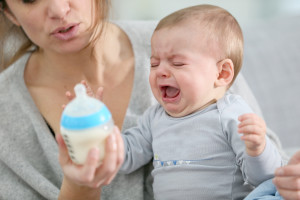By Iris Farrou
13 Jan, 2023
Fatherhood, Lifestyle Tips, New Moms, Parenting, Pregnancy, Your baby's health
New Parents, Pregnancy, Prenatal, prenatal classes, Prenatal Education, Support

A vast number of expecting parents choose to educate themselves on issues of pregnancy, delivery, and caring for a newborn. Though documentaries and books are very helpful, birthing education classes are also a popular choice among prospective parents, or returning parents. Many couples find this to be a bonding experience, as both parties become educated on matters of prenatal care, delivery, and postpartum care. Additionally, it helps build a community–and even friendships–as concerns are shared among other expectant parents. Most importantly, you can share questions, concerns and fears in a safe and well informed environment with an experienced instructor by your side and become more and more confident in your body’s ability to give birth.
To start off, there are two types of classes: hospital-based ones and ones outside the hospital. In both cases, your instructor will discuss pain relief options, breathing techniques and medications, and even show you some supportive massage techniques. Emotional aspects, coping and relaxation skills, as well as the physiology of labor and birth are also topics covered in off-hospital birthing classes. Those are often the spaces where you discuss the different childbirth options.
If you opt for a hospital birth, and are taking a prenatal class located in a hospital, you will most likely receive a basic overview of labor and birth practices specific to the hospital of your choice. Additionally, you will get the chance to tour the facilities and see the staff in action and ask questions regarding routine practices–such as freedom of movement during labor.
However, even if you are starting from zero and have no idea about what method of childbirth you want to follow, how to construct a birth plan, what are the best practices that work for you during pregnancy and labor, it is important to consider some credible elements when choosing a birthing class:
- Make sure the instructor is certified to teach childbirth classes
- Consider whether the class’s philosophy suits you
- What are the topics covered in the curriculum and what is the cost of the class
- What is the extent of partner participation and education
- How many couples are in the class and how often does it take place
- Does the class focus on one birthing philosophy or multiple? How well rounded and open minded is the curriculum and the instructor?
You may locate credible birthing classes through your physician or hospital, family and friends, pregnancy centers, as well as community resource centers. Two Buffalo-based options include Buffalo Birth & Baby that covers a variety of areas, and offers support through all the pregnancy, delivery, and postpartum stages–and even offers online classes! Buffalo Doula Services offers not only educational materials and classes, but also hands-on support with widely experienced doulas to fit each family’s needs.
https://americanpregnancy.org/healthy-pregnancy/labor-and-birth/childbirth-education-classes/
https://buffalobirthandbaby.com/
https://www.buffalodoulaservices.com/
More
By Iris Farrou
08 Dec, 2022
Fatherhood, Heart health, Lifestyle Tips, Mental Health, New Moms, Parenting, Postpartum, Pregnancy, Procedures, Queer Health, Reproductive health, Surrogate, WNY Ob-Gyn News, Women's Health, Your baby's health

You have probably heard of couples using surrogate mothers to conceive, or carry a pregnancy to term. The term is often associated with a couple’s fertility challenges, and difficult as those may be, it doesn’t stop being a wonderful way for a couple to have a baby– the parents who initiate the process are called the “intended parents,” and the individual carrying the fetus is the “surrogate mother.” Some of the reasons parents-to-be consider surrogacy may be:
- Trouble conceiving through IVF, which may be related to infertility of unknown origin
- Medical issues that affect the uterus, or even a previous hysterectomy
- Conditions that make the pregnancy too high-risk, such as health concerns or advanced maternal age
- Queer couples
If you didn’t know it, there are two types of surrogacy: traditional one and gestational surrogacy.
Traditional Surrogacy: this is the least commonly used method of surrogacy as it comes with more legal and emotional complexities. In traditional surrogacy, the surrogate is both the egg donor and the surrogate mother. She uses her own eggs, and therefore has a genetic relationship to the baby. During this method, the surrogate is impregnated using intrauterine insemination. The doctor uses sperm provided by the intended father, transfers it into the uterus of the surrogate, and natural fertilization of the egg takes place from then on. As medical science advances, this type of surrogacy becomes increasingly less common.
Gestational Surrogacy: this is the most commonly used type of surrogacy, and there is no genetic relationship between the surrogate mother and the fetus. Instead, an embryo is inserted into the surrogate’s uterus and she carries the pregnancy to term for the intended parents. To get to that point, the intended parents provide sperm and eggs–or use either/or from a donor–fertilize them and then have them inserted into the surrogate mother’s uterus using in vitro fertilization. In this type of surrogacy, the surrogate may be also called gestational carrier.
Why this choice?
As mentioned above, there are several health reasons why intended parents may choose to find a surrogate mother. However, the decision does not have to rely on those health reasons, and it is always deeply personal and a private decision. The most common reason people choose surrogacy over adoption is that they want to have a biological connection to their child; even though familial bonds are not necessary to build a strong, happy, and healthy family, many parents do want a biological connection to their offspring.
Surrogacy offers a safe and transparent pregnancy as the intended parents are there every step of the way. The most common concern with adoption is that the future parents do not know the medical history of the birth mother, or the father. This can raise serious concerns about their future baby’s medical history, and many parents feel uneasy not knowing whether their adoptive infant may have potentially been exposed to malnourishment or toxins in-utero.
If you are considering a surrogate option for your family, consult with your family doctor first, and keep in mind you may also need to review your state’s laws around surrogacy agreements.
https://www.surrogateparenting.com/blog/what-is-a-surrogate-mother/
https://www.fertilitypreservation.org/blog/when-to-consider-surrogacy-and-how-to-choose-the-right-one
More
It is quite usual in our society for the mother to be the primary caregiver to a newborn baby, toddlers and kids. That is not to say that fathers are absent, but the stereotype of Super Mom has been created by a general tendency to place fathers in the workforce and mothers in the home. In 2022, the US Census Bureau reported that 1 in 4 children in the US grow up without a biological, step, or adoptive father in the home– that amounts to 18.4 Million children!

The National Fatherhood Initiative reports several negative effects associated with paternal absence in the home, some of which include:
- 4x greater risk of poverty for the family
- Children are more likely to have behavioral problems, which may lead to them dropping out of school, teen pregnancies, imprisonment, drug and alcohol abuse, commiting crimes etc.
- Greater chances of facing emotional neglect and abuse.
On the other hand, a father’s active and involved presence in the home can mean a strong foundation for the well-being of the children, including some of the following advantages:
- Lower rates of injuries, emotional and behavioral problems, and obesity
- The chances of low birth weight and infant mortality significantly decrease as well
- School performance is increased
In 2017, King’s College London and Oxford University Researchers found that actively involved fathers, and especially those who contribute in their childs’ life in the first few months, are providing significant developmental advantages to their children. Involved fathers positively impact their children’s cognitive functioning, improve breastfeeding rates, and even help preterm infants gain healthy weight. High levels of father involvement correlate with higher levels of social confidence, good social skills, self-control, and overall boosted emotional well-being. Such as the negative effects of fatherly absence persist into adulthood, so do the positive effects of fatherly involvement: the presence of both parents leads to adult children who are more emotionally mature, and better equipped to make mature and wise decisions in their teenage and young adult years.
It is important to remember that it is the quality and not the quantity of paternal involvement that can have a great effect on children’s lives: non-resident fathers can still have a great impact on the psychological and mental well being of their children, as well as on their academic achievements and behavioral adjustments. Children with actively involved fathers are more likely to perform better in school, and to follow through with their college and graduate education. Even more specifically, father involvement shows reduced risk for behavioral problems and delinquency in boys, and reduced risk of psychological problems and rates of depression in young women.
https://www.all4kids.org/news/blog/a-fathers-impact-on-child-development/
https://www.fatherhood.org/father-absence-statistic
More
By Iris Farrou
08 Dec, 2022
Lifestyle Tips, Mental Health, New Moms, Parenting, Pregnancy, Queer Health, WNY Ob-Gyn News, Your baby's health
Baby's First, Chanukah, Children, Christmas, family time, Hanukkah, Holiday, holiday stress, Holidays with a Newborn, Kwanza, Mental Health, Newborn, Young Children
 It is widely known that holidays are one of the most stressful times of the year– though toddlers and children seem to enjoy them, and there is a certain magic that comes with it all, we should remember this comes at the expense of parents, and especially mothers. Holiday stress increases if you have just welcomed a new member in your family, and are trying to juggle a newborn baby and holiday traditions. There is no simpler way to put it than: focus on you and your baby. As a new mother, this is honestly the only thing you should be worried about; keeping yourself and your baby healthy and safe. However, reality is not always ideal. Here are some tips that may help lessen the holiday stress if you are facing such an incredible combination:
It is widely known that holidays are one of the most stressful times of the year– though toddlers and children seem to enjoy them, and there is a certain magic that comes with it all, we should remember this comes at the expense of parents, and especially mothers. Holiday stress increases if you have just welcomed a new member in your family, and are trying to juggle a newborn baby and holiday traditions. There is no simpler way to put it than: focus on you and your baby. As a new mother, this is honestly the only thing you should be worried about; keeping yourself and your baby healthy and safe. However, reality is not always ideal. Here are some tips that may help lessen the holiday stress if you are facing such an incredible combination:
- Change your expectations: you already knew your life would drastically change with a newborn, and if this happened into the holiday season there is no reason why this would be any different. We are creatures of habit and there is something comforting in having a decorated house, attending family gatherings, consuming holiday food, and participating in festivities. However, letting go of traditional expectations with a newborn during the holidays can significantly lessen your stress, and help you get through the season in a calm, and happy, manner. Nobody expects you to be the perfect hostess, or even guest, if you have just given birth– and you should not be expecting that of yourself either. Meals can wait, Christmas trees can become a simple wreath or a premade tree, but your baby’s first few weeks will not come back: savor that time with your family, and all else will come in due time.
- Simplify your days: to-do lists and preparations often become hectic around the holidays (more so than usual!). Remember, however, that this is not the time to go all out on Christmas decorations, gifts, meals, or anything else. If you feel like you have the energy for some of it, or if leaning into the holiday spirit will help you to feel less stressed, be selective with what you choose to put on your plate. Perhaps a short visit to the Christmas market this year is more manageable than standing long hours at the mall to see Santa– it may be more enjoyable, and leave you with some energy for the rest of the day. Or, you can have a family gift craft session at home instead of going out at all.
- Ask for help: isn’t helping others part of the holiday spirit? Why not take advantage of that now more than ever, and lean into your close family and friends to assist you in holiday activities, bring the festivities into your home or in a chill space, and help take care of you and your newborn? Select people you trust, set boundaries on how much or how little you can handle, and shape up those days in a design you can easily manage. Delegating responsibilities during this time is the best gift you can give to yourself, and you would be surprised how many people will be happy to offer their assistance in practical ways!
There are ways to embrace the holiday spirit and experience the magic of the festive season that don’t have to exhaust you; if you and your newborn are healthy and feel like you can manage a balance between traditional holiday activities and new ideas or reconfigurations, experiencing the magic in small ways will be extremely rewarding!
https://theeverymom.com/family-traditions-creative-new-ideas/
https://healthblog.uofmhealth.org/childrens-health/could-holiday-stress-be-affecting-your-childs-holiday-joy
More
By Iris Farrou
01 Nov, 2022
Health Conditions and Pregnancy, Lifestyle Tips, New Moms, Nutrition, Pregnancy, Women's Health, Your baby's health
Common pregnancy complications, Gestational diabetes, Gestational Diabetes Mellitus, lower diabetes risk

You may be familiar with Diabetes Type 1 and Type 2, but did you know there is also a bonus one, called Gestational Diabetes Mellitus– or Gestational Diabetes for short? Gestational Diabetes is diabetes that’s diagnosed for the first time during the gestation period, aka pregnancy. Contrary to Type 1 diabetes, GDM is not caused by a lack of insulin. Instead, it is caused by hormones produced during pregnancy that make insulin ineffective. This is also known as insulin resistance, whereby the mother’s body does not use insulin as it should. Like other types of diabetes, GDM affects how cells use sugar. About 3-8% of pregnant people in the US are diagnosed with gestational diabetes; its symptoms disappear after delivery, and the great news is that you can help control gestational diabetes!
Symptoms: gestational diabetes does not have any symptoms on its own, except increased thirst and frequent urination (which could be pregnancy related regardless). If you are risk for Type 1 diabetes because one of your parents or siblings has it, or at risk for Type 2 diabetes because you are prediabetic, over 45 y/o, may be overweight, don’t exercise often, or have previously had gestational diabetes, your doctor may deem you are at high risk for GDM and suggest you be tested.
Risks: GDM is not like Type 1 Diabetes which can cause birth defects–in fact, GDM arrives too late in a pregnancy to cause any birth defects. Insulin resistance starts showing up around Week 24. Therefore, and thankfully, the complications are manageable and preventable. Generally, gestational diabetes may cause macrosomia and hypoglycemia, which are the two major health issues associated with it. Macrosomia refers to an excessively large fetus and hypoglycemia refers to low blood sugar in the baby immediately after delivery.
Treatment: there are available treatments for gestational diabetes, and many depend on your age, overall health, and medical history. However, the most common ways to manage GDM are to regularly check your blood sugar so it stays on healthy levels, creating a healthy eating plan with your doctor and following it, being active, and monitoring your baby.
As is the case with any pregnancy complication, it is understandable that it may cause you stress. While there is no certain way to prevent stress, do know that gestational diabetes is very manageable and has very low health risks for your baby. In fact, your own stress may cause more complications during pregnancy than gestational diabetes. You can better gauge your risk for GDM by checking your family history and having a general health assessment with your doctor early on in, or even before, your pregnancy. It is advisable to attend all your prenatal appointments, voice your concerns with your doctor, and maintain a healthy lifestyle to address the possible risks of gestational diabetes.
https://www.mayoclinic.org/diseases-conditions/gestational-diabetes/symptoms-causes/syc-20355339
https://www.cdc.gov/diabetes/basics/gestational.html
https://www.hopkinsmedicine.org/health/conditions-and-diseases/diabetes/gestational-diabetes
More

If you have heard the word “circumcision,” you would most probably know it is done in the newborn period of a boy’s life. It is not unlikely that older boys or adult men undergo this procedure for personal, cultural, or medical reasons. Circumcisions are undoubtedly a controversial issue and, in the majority of the Western World, the decision rests with the parents of the newborn boy. Most commonly, it is a procedure performed in the United States, Canada, the Middle East, Australia, and Africa. It is less common in Asia, Europe, and South America. Parents may choose to circumcise their son for a number of reasons, such as religious beliefs, hygienic concerns, or the belief that it benefits the boy’s health at all stages of his life.
Before making this decision, it is important to know some facts about circumcision and be aware of both the advantages and the potential risks. Overall, it seems that the advantages of male baby circumcision outweigh the negative effects—as the American Academy of Pediatrics Supports. Though it is an ancient religious procedure, it has been thoroughly researched and studied by medical professionals across the globe.
What is it?
Circumcisions are a surgical procedure that refers to the removal of the skin that covers the tip of the penis (also known as foreskin).
What are the advantages?
Some of the health benefits of circumcision include:
- Easier hygiene: the removal of the foreskin makes it easier to wash the penis. Although it enhances good genital hygiene, boys should be taught how to properly clean themselves regardless.
- Decreased risk of urinary tract infections: though the risk of UTIs in males is generally low, UTIs are more common in uncircumcised males.
- Decreased risk of contracting HIV and other sexual transmitted infections. Remember circumcision is not a preventative for STIs, but it does lower the risks of one.
- Prevention of penile problems: the foreskin on an uncircumcised penis can be difficult or impossible to retract, also referred to as phimosis. This can lead to inflammation of the head of the penis, something that circumcision helps prevent against.
- Lower risk of penile cancer: although this is a rare type of cancer, it is less common among circumcised men. In addition, the risks of cervical cancer are lower among the female partners of circumcised men.
What are some risks?
Serious complications associated with circumcision are extremely low, around 0.2%, and mostly associated with circumcisions occurring outside a hospital. Minor complications are about 3%. All risks are minimal when the procedure is carried out by a trained medical professional in a sterile setting.
Some rare complications may include:
- Bleeding at the time of the procedure
- Infection
- Pain
- Deformity to the penis, usually appearing at a later age
Remember you are not medically or legally required to circumcise your baby. If you choose to do it, consult with your doctor and make sure you are comfortable in your decision, as well as
More

Since most babies will spend time in the car with their parents starting shortly after birth, it’s essential to think through car safety before the baby is born. While laws vary by state, New York requires all children to be in a car seat until the age of four and in a booster type until the age of eight.
New York State’s new law requires:
- Infants—that weigh 22 pounds or less and measure 25 inches or less in length—should be placed in an infant car seat in the car’s back seat with the child facing the rear of the car.
- Toddlers are to remain in rear-facing car seat until they are two years old and meet the car seat manufacturer’s height and weight limits.
- From two to four years old, children should be in a front facing seat as long as possible (until they reach the car seat manufacturer’s highest height and weight limit).
- Children should use a booster seat until they are eight years old, 80 pounds, and 4 feet 9 inches tall.
Seat installation is also important and should be checked by an expert. New York State offers permanent inspection stations for parents to have the safety of their car seat inspected. To find a location, visit https://trafficsafety.ny.gov/child-safety-seat-inspection-stations. There are eight stations in Erie County.
The National Highway Traffic Safety Administration (NHTSA) has great resources for finding and comparing car seats (https://www.nhtsa.gov/equipment/car-seats-and-booster-seats), however, remember that the national guidelines are different than New York State’s height and weight limits.
When considering safety accessories, there are no set laws. The following list provides a brief overview to commonly used accessories.
- Head rests, pillows, and infant support items should be limited to the products sold with the car seat or recommended by the seat’s manufacturer. Essentially, you should not prop up your baby in the car seat with blankets or pillows.
- Mirrors and toys can harm children if an accident occurs, so—if needed—it’s best to choose flexible soft plastic accessories.
- In cold weather, bulky coats and foot/hand muffs should be avoided if it alters your child’s position in the harness. Instead, opt for placing the coat or a blanket over your child and the restraint.
The main takeaway is to choose a highly rated car seat and to follow the manufacturer’s recommendations on height, weight, and appropriate accessories.
More
Gas – we all have it, and newborns are no exception.
 Due to access air swallowed when feeding, crying, and sucking on a pacifier, babies tend to be gassier than toddlers and older children. Because babies can’t limit the intake of air, they may pass gas more often. While passing gas is normal, it can lead to uncomfortable pain. Babies can’t communicate to let you know when they are feeling discomfort, so always be on the lookout for gas pain or other discomfort. Oftentimes, small adjustments with feeding can alleviate issues with gas.
Due to access air swallowed when feeding, crying, and sucking on a pacifier, babies tend to be gassier than toddlers and older children. Because babies can’t limit the intake of air, they may pass gas more often. While passing gas is normal, it can lead to uncomfortable pain. Babies can’t communicate to let you know when they are feeling discomfort, so always be on the lookout for gas pain or other discomfort. Oftentimes, small adjustments with feeding can alleviate issues with gas.
The following list provides at-home strategies to ease gas pain in your baby.
- Find the best feeding position. The majority of gas pain occurs because your baby ingests too much air. In order to limit the amount of air your baby intakes, focus on the position of your baby’s head when feeding. Work to keep the head raised above the stomach. Elevating the head allows the milk to fall to the bottom of the stomach, letting the air rise to the top, which makes it easier for your baby to burp access air bubbles.
- Be aware of bubbles in bottles. If you are warming a breast milk bottle and shake it up, you will create air bubbles in the milk. Formula requires shaking, so air bubbles build up in those bottles as well. Simple allow the bottle to settle for a few minutes before feeding as this should eliminate most of the bubbles and decrease air ingestion.
- Select the proper nipple. When bottle feeding, always use a low-flow nipple to reduce the amount of air ingested while feeding. Additionally, be sure the entire nipple fills with milk or formula before administering the bottle to your baby, as air caught in the nipple may accidentally be fed to your baby.
- Take occasional burping breaks. Longer breaks are suggested if your baby doesn’t burp that time around. To ensure your baby burbs in each cycle, take breaks and lay him/her on their back for a few moments and then try burping again.
- Massage your baby’s tummy. In addition to limiting air intake, massaging can provide relief. Tummy time and gentle stomach massage can help the gas pass.
- If breastfeeding, examine your diet. It is true that some foods that mom’s ingest might cause more gas for baby. What foods do you eat that may cause gas? Dairy products and caffeine may irritate your baby’s stomach. Do you notice more gas after you’ve had onions, broccoli or garlic? Additionally, as your baby moves on to juices and solid foods, some babies have trouble digesting the sugar alcohols found in some fruits.
When should you seek professional help?
If your baby is particularly fussy and at-home tactics for feeding aren’t enough, it may be time to consult your doctor. Additionally, if your baby has a fever or vomiting or bowl movement issues, following up with your child’s pediatrician is best.
More
 In recent years there has been an increasing amount of dialogue and debate about the benefits of immunizations for newborns. While every parent needs to decide how best to safeguard the health of her child, it is essential to understand the benefits of immunizations, and the risks involved in choosing not to immunize. Before you choose to say “no” to vaccinating your baby, consider the following proven health benefits.
In recent years there has been an increasing amount of dialogue and debate about the benefits of immunizations for newborns. While every parent needs to decide how best to safeguard the health of her child, it is essential to understand the benefits of immunizations, and the risks involved in choosing not to immunize. Before you choose to say “no” to vaccinating your baby, consider the following proven health benefits.
Immunizations are Life Savers
Immunizations can save your child’s life. Today’s vaccines have proven to protect children from complex and deadly diseases that, in the past, took the lives of thousands of children each year. Vaccinations have helped to all but eliminate such diseases as smallpox, diphtheria, tetanus, yellow fever, whooping cough, polio, and measles. To continue to keep children safe from these diseases, each generation must maintain immunity through the use of proven childhood vaccinations.
Immunizations Help Prevent Lifelong Disabilities
Some vaccine-preventable diseases, even if not deadly, can result in prolonged health complications and disabilities. For example, pertussis, or whooping cough, can cause such complications as pneumonia, seizures, or brain damage, while polio can result in life-long paralysis. Since there is no cure for diseases such as polio, vaccination is the only way to protect children from possible lifelong disabilities associated with these diseases.
Immunizations are Safe
For parents fearing the potential risk factors of vaccinations, take comfort in knowing that vaccinations are both safe and effective. All vaccines are heavily tested and their results are monitored before being mass produced and distributed. While such mild side effects as discomfort, redness and tenderness at the injection site are known to occur, such factors should be of minimal concern compared to the risks of the diseases that vaccines prevent.
Immunizations are Required by Many Institutions
Many schools and health care facilities require children to be vaccinated before admittance. By choosing not to vaccinate your child, you may be limiting your child’s future opportunities for care and education.
Immunizations Protect the Future
Thanks to vaccinations, small pox is one disease that has been completely eradicated. Today, immunizations save an estimated 9 million lives around the world each year. Despite these advances, scientists believe that an additional 16 million deaths could be avoided annually if effective vaccines were deployed against all vaccine-preventable diseases. With more parents willing to vaccinate their children today, we have a better chance of protecting children tomorrow from the continued threat of preventable diseases and their long-term effects.
If you are considering whether or not to vaccinate your child, talk to your child’s doctor about the benefits and potential side effects of immunizing your newborn. Every parent wants to protect his child from health threats and give him the best chances to live a long and healthy life. Regular immunizations should be a part of every parent’s disease prevention plan for their child. With generations of proven effectiveness, parents can rest assured that the benefits of vaccinating their child will far outweigh any temporary discomfort.
More








 Due to access air swallowed when feeding, crying, and sucking on a pacifier, babies tend to be gassier than toddlers and older children. Because babies can’t limit the intake of air, they may pass gas more often. While passing gas is normal, it can lead to uncomfortable pain. Babies can’t communicate to let you know when they are feeling discomfort, so always be on the lookout for gas pain or other discomfort. Oftentimes, small adjustments with feeding can alleviate issues with gas.
Due to access air swallowed when feeding, crying, and sucking on a pacifier, babies tend to be gassier than toddlers and older children. Because babies can’t limit the intake of air, they may pass gas more often. While passing gas is normal, it can lead to uncomfortable pain. Babies can’t communicate to let you know when they are feeling discomfort, so always be on the lookout for gas pain or other discomfort. Oftentimes, small adjustments with feeding can alleviate issues with gas.